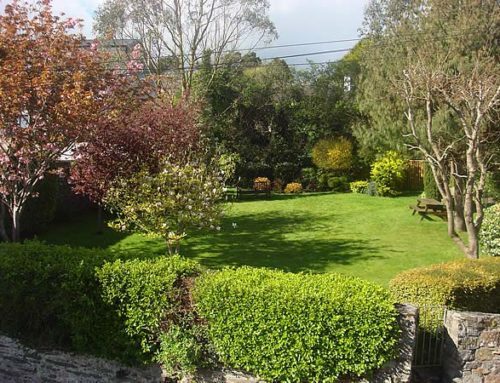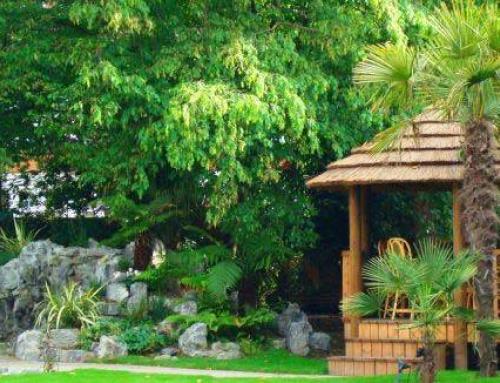Back to Reality – Plants for Harsher Winters by Myles Challis
The last two hard winters have made many gardeners realise that we had come to take for granted the relatively mild ones that we had previously become accustomed to.
The once familiar sight of such things as huge Cordylines, Phormiums, and even Phoenix Palms are now almost non-existent in the garden and while we should not assume the harsh winters will continue we should perhaps think differently as to the main structural plants for the garden.
The large holes left by the many softer plants can be replaced with hardier varieties. We still have reliably hardy plants like Trachycarpus Palms, Bamboos and Prunus Lusitanica if we desire a lush and leafy architectural setting to which we could add such things as the evergreen Magnolia Grandiflora, Camellias and Rhododendrons for their handsome foliage, Photinia for its bright red new leaves and so on. The garden would look different but should be no less attractive or interesting.

Prunus Lusitanica | Portuguese Laurel Trees
Change is refreshing every now and then even with our gardens. By introducing new plants we change the feel of the garden. If for example Tree Ferns are a feature of your garden adding deciduous Japanese Acers to create a lovely atmosphere would be further enhanced if water and rock features were introduced into the design. Purple foliage Acers add a wonderful splash of colour. If you added bamboos the garden then takes on a Japanese feel. Acers are normally the main feature plant in Japanese gardens but Nandina Domestica, the Heavenly Bamboo Shrub is another hardy, colourful and flowering alternative.
Water not only adds life including wildlife to the garden but also allows you to introduce moisture loving plants such as Gunnera Manicata, Rheum and various varieties of Grasses which can all be used to soften the margins of the pond or water feature.
We all have different tastes when it comes to plants but I have always considered it important to choose evergreens whenever possible. The English summers are relatively short and so it is better to have planting schemes that look good all year round and that involves using a high percentage of evergreen shrubs and trees.
Understandably colour is high on many peoples agendas but structural plants are important and come in many different shades and shapes so should never be boring. There are wonderful combinations of plants to give colour and structure such as the large shiny leaves of the Magnolia Grandiflora which have copper coloured undersides, the smaller dark green foliage of the Pittosporum Tobira, to the silvery green leaves of Olives, the bright variegation of the Pittosporum Silver Queen and dark purple leaves of Pittosporum Tom Thumb.
It is obviously preferable to have evergreens but some deciduous plants have other very interesting features. In trees there is the snowy white trunks of Betula Jacquemontii and the polished red mahogany of the Prunus Serrula. The bright red or lime green stems of the Cornus shrubs. So if you are undecided or uncertain as to what to do after having lost plants over the last two winters then consider other options that are open to you in terms of a new look. Rather like redecorating your house I am sure once the garden makeover is complete you will feel happy with the result.






